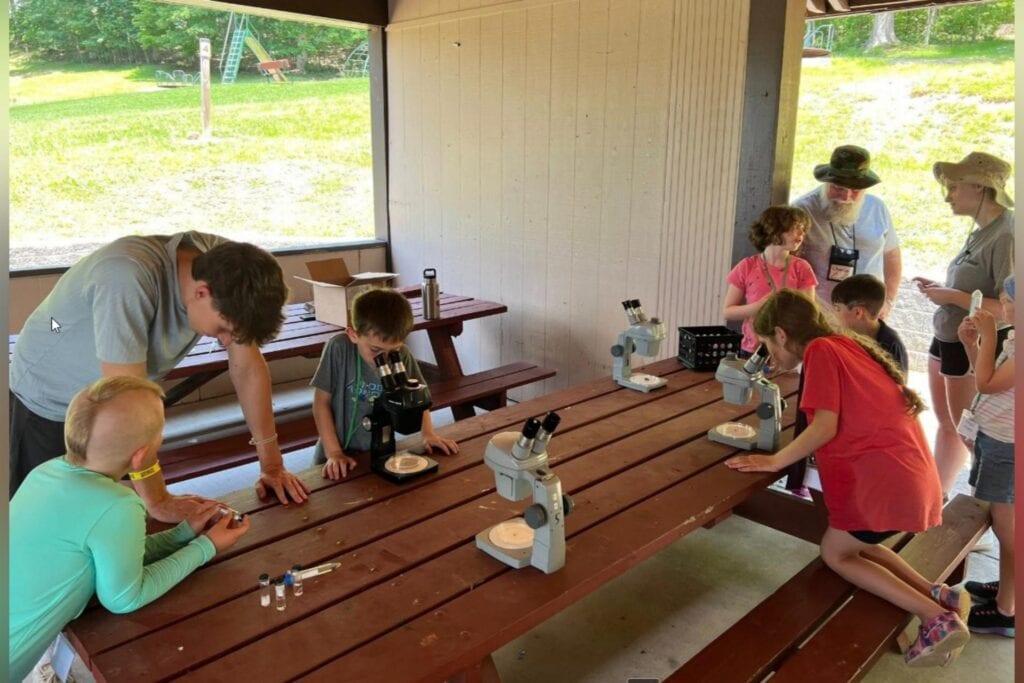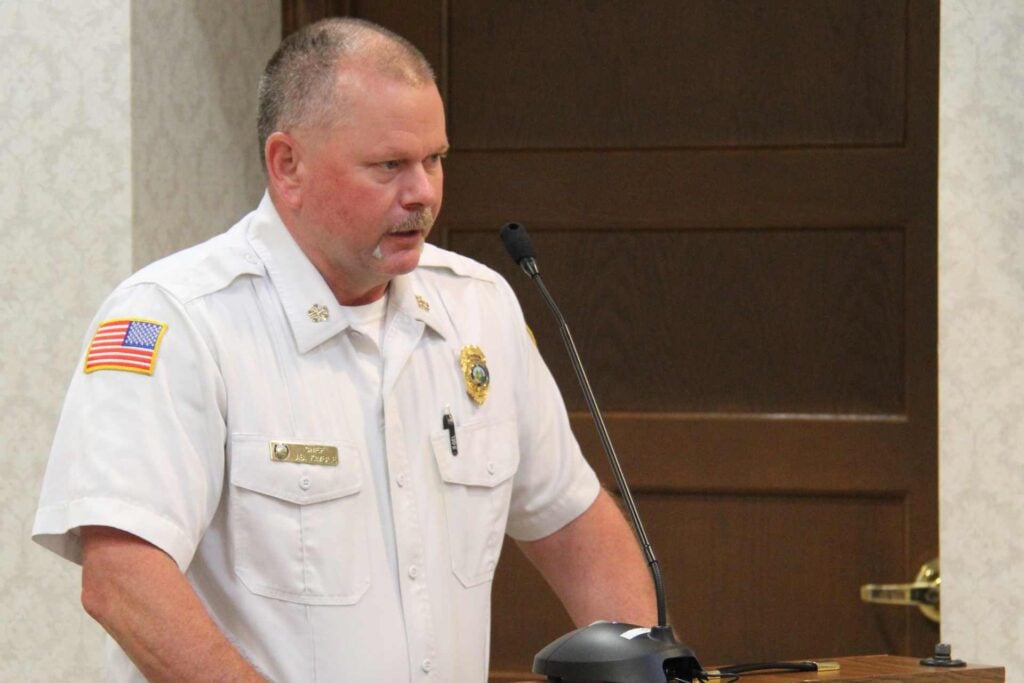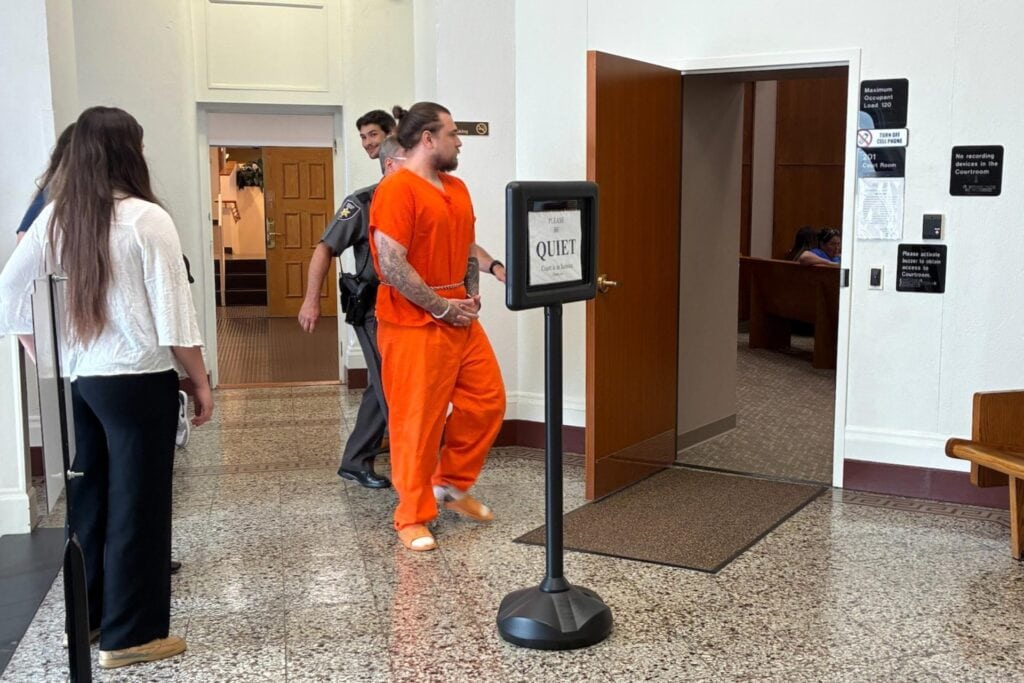Editor’s note: This story was originally published by Mountain State Spotlight. Get stories like this delivered to your email inbox once a week; sign up for the free newsletter at https://mountainstatespotlight.org/newsletter
By Douglas Soule, Mountain State Spotlight
When the pandemic hit West Virginia in the spring of 2020, the symptoms were immediate, even before cases and deaths were close to their peak: Shutdowns and public health concerns forced thousands of state residents out of their jobs.
Continued unemployment claims skyrocketed from fewer than 15,000 to more than 146,000 within a handful of weeks. Even as claims began trending down, new federal unemployment programs were introduced that the state had never worked with before.
“The load was just beyond anything we would have ever imagined was possible,” WorkForce West Virginia Deputy Director Jeff Green told lawmakers last month.
The result, according to a recent audit, was tens of millions of dollars in fraud and significant delays in sending unemployment aid to West Virginians.
These findings put yet another spotlight on the state’s unemployment program, the rules and requirements of which have been a source of contentious debate. And Senate President Craig Blair, R-Berkeley, says changes to the system are a priority for legislators as they begin their regular session next week.
As changes are considered, some experts and lawmakers urge caution. There’s room to improve the system, they say, but Blair’s plans also have the potential to hurt the West Virginians who rely on that system.
Modernization
The technology that runs West Virginia’s unemployment system was already due for an upgrade. But those limitations were made all the more obvious when the pandemic hit and unemployment claims exploded: WorkForce West Virginia saw a 766% increase in claims from 2019 to 2020.
And as the agency struggled to keep up, West Virginians needing unemployment aid were left waiting.
“It was a very, very tedious process, and very hard to get a hold of anybody,” said Morgantown resident Jennifer Harman, who was laid off after her company was purchased by another. She applied for unemployment in May 2021, but didn’t receive it until the end of July.
“Then with that being on hold, I didn’t know how I was going to feed my kids or pay my mortgage or my car payment,” Harman said.
Over the past two years, those delays have become typical.
Green said the surge of claims, mixed with the agency’s technological limitations and the creation of new federal unemployment programs, created the storm of problems they experienced. In the 15 months before the pandemic started, a legislative audit found that WorkForce processed nearly all — 88.5% — of initial unemployment claims within two weeks. By May 2020, that number had dropped to 53%.
By August 2020, nearly a third of the payments were taking more than two months to process.
The audit concludes that WorkForce is learning from its pandemic experiences and adjusting accordingly.
But WorkForce representatives say more resources are needed. Green said they’re working with the governor’s office to secure American Rescue Plan money for upgrades. The state will ultimately receive $1.35 billion in ARP money to use for various projects. In addition, the federal legislation includes hundreds of millions of dollars in potential grants to improve fraud prevention and to improve outreach and customer service.
Green said it would take $40 million to get the agency back up to speed.
“It’s certainly stuck in our minds how absolutely critical [it is] to have modern and very stable architecture,” he said, “so that we can upgrade and bring the agency into a more solid technological standing.”
This has the support of Blair, the Senate president.
“Workforce West Virginia’s computer systems are critically outdated and they’re well past due for a major technology overhaul,” he said.
And while Blair said any solution would have to be worked out between WorkForce West Virginia, the governor’s office and the Legislature, it’s a priority that would likely get bipartisan support.
“Our technology is really behind, and so I’m excited that we’re focused on [improving it],” said Delegate Kayla Young, D-Kanawha.
This may be a good time to do it.
“That’s exactly the type of thing they should be doing when claims are relatively low, like they are now,” said Matt Weidinger, a senior fellow and Rowe Scholar at the American Enterprise Institute, a think tank that promotes free enterprise. “You definitely want to fix the roof while the sun is shining.”
But while lawmakers are at it, Andrew Stettner, a senior fellow at progressive think tank The Century Foundation, says there are other ways the system could be modernized, too.
His recommendations go beyond technology: he says the system is designed for an older economy.
“You want a program that will cover an array of reasons for why people lose their job,” he said. That includes not just people who are let go, but also those who have to stop working for child care reasons or domestic violence situations.
Reducing weeks
That particular kind of system modernization isn’t on Blair’s shortlist of priorities. But he’s eyeing two other changes: shortening the amount of time West Virginians can get unemployment benefits and changing the law to allow partial benefits for employed people who are searching for a better job.
His first idea hinges on something that experts — even those in the Justice administration — have refuted: that unemployment benefits are contributing to workforce shortages.
While WorkForce West Virginia representatives say there are more state jobs than there are people, they also have recently acknowledged that — despite ending federal unemployment benefits three months early — that benefits didn’t play much of a role in the workforce problem.
“Are generous government benefits encouraging more people to quit? Well, maybe. But some evidence suggests that’s not true,” said WorkForce West Virginia Commissioner Scott Adkins during a legislative meeting last month. “Are more people angling for a raise after decades of stagnant pay? I would say probably so. Family pressures imposed by closed schools, the closing and reopening of businesses, the reshuffling of population to different locations and industries and the fear of the virus in face-to-face settings have all also most certainly played a critical role.”
During the upcoming session, Blair wants to tie the number of weeks someone can draw benefits to the state’s current unemployment rate. Right now, these state unemployment benefits last for 26 weeks.
“If we are in a situation where jobs and opportunities are plentiful, people won’t need as much time to search for work. When jobs are scarce, we can offer the flexibility of more time to find a job,” he said in an email. “We should pair that with increased efforts to connect those people who are looking for work with companies who need employees.”
A similar effort was made last year, but didn’t get much traction. The two bills would have cut employment benefits to 12 weeks if the state’s unemployment rate was below 5% — the state’s November rate was 4% — then it would have been cut to twelve weeks. Benefits would have been capped at 20 weeks, and that was only if the rate exceeded 9%.
In November, West Virginia’s unemployment rate was 4%.
But state and national experts say tying unemployment benefits to the unemployment rate hasn’t been shown to help, and could hurt some West Virginians.
Sean O’Leary, the senior policy analyst for the West Virginia Center on Budget and Policy, said regional differences and case-by-case situational differences make doing that impractical. Job availability varies widely in different parts of West Virginia.
“So doing that really is misguided. It does not reflect the labor markets in West Virginia,” he said. “Using one number to represent everyone in the state’s circumstances just doesn’t reflect reality.”
Research by the National Employment Law Project says such reductions can “exacerbate inequities already experienced by people of color, people living in higher-populated communities, and people in underpaid jobs, particularly women of color.”
Blair said that shortening the weeks is “a proven concept.”
“Most importantly, there are jobs out there,” he said. “Small businesses in our communities are desperate to hire so they can fully reopen; how many shops have you seen that have temporarily stopped opening on Mondays altogether?”
Blair said the move to reduce the weeks would coincide with another change: When people accept a job that doesn’t pay well, have good benefits, or doesn’t best fit their situation, he’d like them to receive some unemployment compensation as they seek out something better.
He said in an email he plans to introduce legislation that would encourage someone to take an offered position, which will help not only get them in the labor force, but maintain their skills and let them “enjoy the pride and meaning that comes with work.”
“Currently, if the job is not considered ‘suitable,’ then there is an incentive to not take the job in order to maintain benefits,” Blair said. “This bill aims to give workers the best of both worlds: accepting a job opportunity to support his or herself and grow professionally, while keeping at least some unemployment benefit.”
O’Leary says this sort of policy would be hard to implement, but there’s another simpler solution: “I think the thing to do…if you’re concerned about people having to take low wage jobs, is to raise the minimum wage.”
Young said she can’t figure out how Blair’s proposal would actually work.
“I can’t imagine an employer that would want to pay into unemployment knowing that that person’s not going to stay at the job,” she said. “Does that mean like for temporary jobs or people [with] low wage jobs?”
Blair said he has been working “very closely” with WorkForce West Virginia on how the program will be administered.
Fraud focus
Before the pandemic, West Virginia had the fourth-lowest fraud rate in the country, according to WorkForce Deputy Director Green. But after the audit’s findings that $83 million was paid out fraudulently, some lawmakers and advocates are worried that number will be used as justification to make it harder to get benefits.
“A lot of that fraud came from out-of-state robots,” Young said. “So I hope we just don’t make it harder for [West Virginians] to access unemployment, when it’s valid and they need it.”
The vast majority of fraudulently-claimed money was for federal unemployment programs; the state lost less than $800,000 of its own money. Much of it may have been stolen by organized teams in foreign countries, and West Virginia’s losses were substantially less than those in some neighboring states.
“They waived a lot of [safeguards] because they were just so overwhelmed,” O’Leary said. “I believe that [$83 million number] will be completely used completely out of context, and I expect to hear that number cited often.”
What’s next
Stettner of The Century Foundation says while he views West Virginia’s unemployment system as outdated, it’s also above average: the state’s maximum benefit amount is higher than Virginia’s and only a little lower than Maryland’s, despite having an average wage that is a lot lower.
And he sees no reason to make any cuts to decrease the program’s quality, especially since the state’s unemployment trust fund, usually funded solely by employers, is flush with federal dollars.
“The employers have no argument, the Legislature has no argument that benefits should be cut,” Stettner said.
Delegate Young agrees.
She does believe that both sides in the Legislature can work together to make positive change, pointing to House Bill 3294, which passed the Senate and House unanimously last year but hasn’t yet gone into effect. Through this bill, employees who have their hours reduced but not entirely eliminated could receive partial unemployment compensation, which allows employers to avoid having to make layoffs when times are hard by opting into a state program. The legislation also strengthens fraud prevention within WorkForce West Virginia.
“Once it gets going, it’s going to be a huge, huge, huge opportunity for employers to keep people employed, because it gives them a lot more flexibility,” Young said.
This session, for example, she hopes not only that money is put aside to improve WorkForce West Virginia’s technology, but also that the Legislature can write a recent executive order into state law to keep the agency from trying to take back money they incorrectly gave to claimants.
But she says to really assist labor force issues, changes need to be made outside of just the unemployment system.
“I’m glad that our unemployment is going down, but I think that there’s a lot that we can do legislatively to get more labor force participation, including things like paid leave and access to child care,” she said.
But, with a Republican supermajority in the Legislature, any of these changes would need significant conservative support. And currently, some of that support is directed toward the cuts Young fears.
Reach reporter Douglas Soule at douglassoule@mountainstatespotlight.org.













